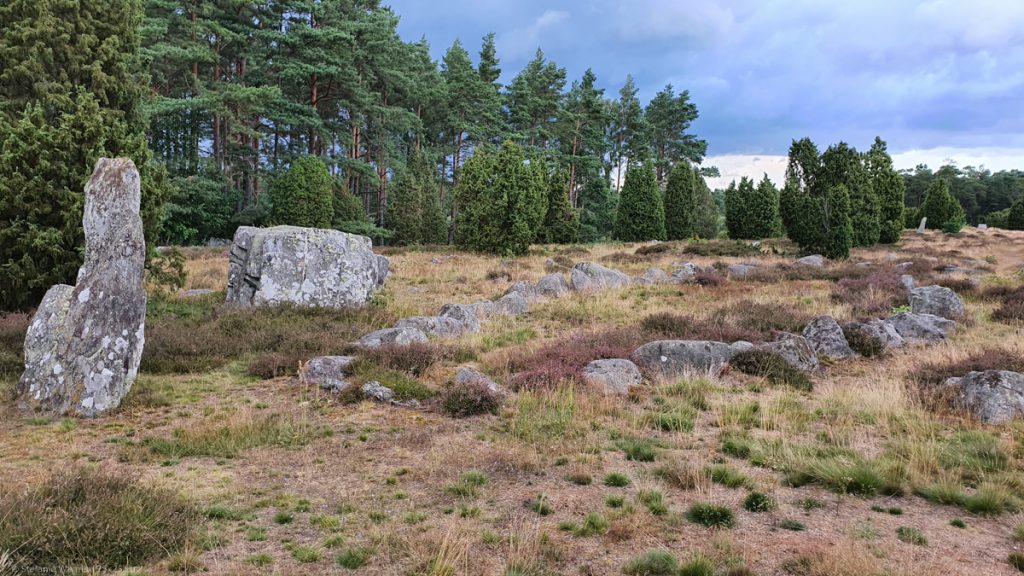Visiting R 100 14
This post is part of a bigger trip I made through Scandinavia with focus on Norway.
Eye opener
I love it when I get to know things and suddenly I see more of what I have just learned in various places. It was like this when discovering that in Baroque churches the altars can have a mirror like appearance. And suddenly I see this in other churches as well.
Here it was about the layout of stones. Being to Ales Stenar I learned about the stone ships/ship settings. When I went to the burial site of Hjortsberga I didn’t know exactly what to expect. I walked around the territory and suddenly I saw them: the ship settings, the stone circles, the bauta stones.

Sure I might have seen some patterns, but I wouldn’t have known what I am looking at. I really love it when my brain gets one of those “oh”-moments.
This is totally different concept of a graveyard. In our culture today graveyards are symmetrical, organized, everything is properly lined up. Here we have all different kinds of shapes and arrangements. According to the information board the site is from the Late Iron Age which means around 700-1050.
The site is also very visible as it is on a top of a boulder rift. A street is passing by that is today very small. But at that time it was the main street going from the coast towards Småland (yep, had to find out that Småland really exists and is not just the made up name of children’s play area of IKEA). So it used to be an important place for the community.

There was no information around by when the bell tower came into the picture (obviously not during the Iron Age). However, it was my first introduction to something that resembled a stave church. I would learn a lot more about those during my trip. Just not yet at this site.
The role of stones in burial rituals
It just crossed by mind how stones play an important part in burial rituals. Stones are everlasting, they don’t fade away (unless they get reused somewhere else). Whenever the custom is to bury the body or the ashes of someone a stone as an orientation point for this place is not far away.

It is just different how the stones are set up. Small – huge, one – multiple, natural – artistically cut.
Some travel tips (from 2021)
- You can park next to the graveyard. The small parking lot is just across the street from the church building (not the wooden tower, but a stone building)

